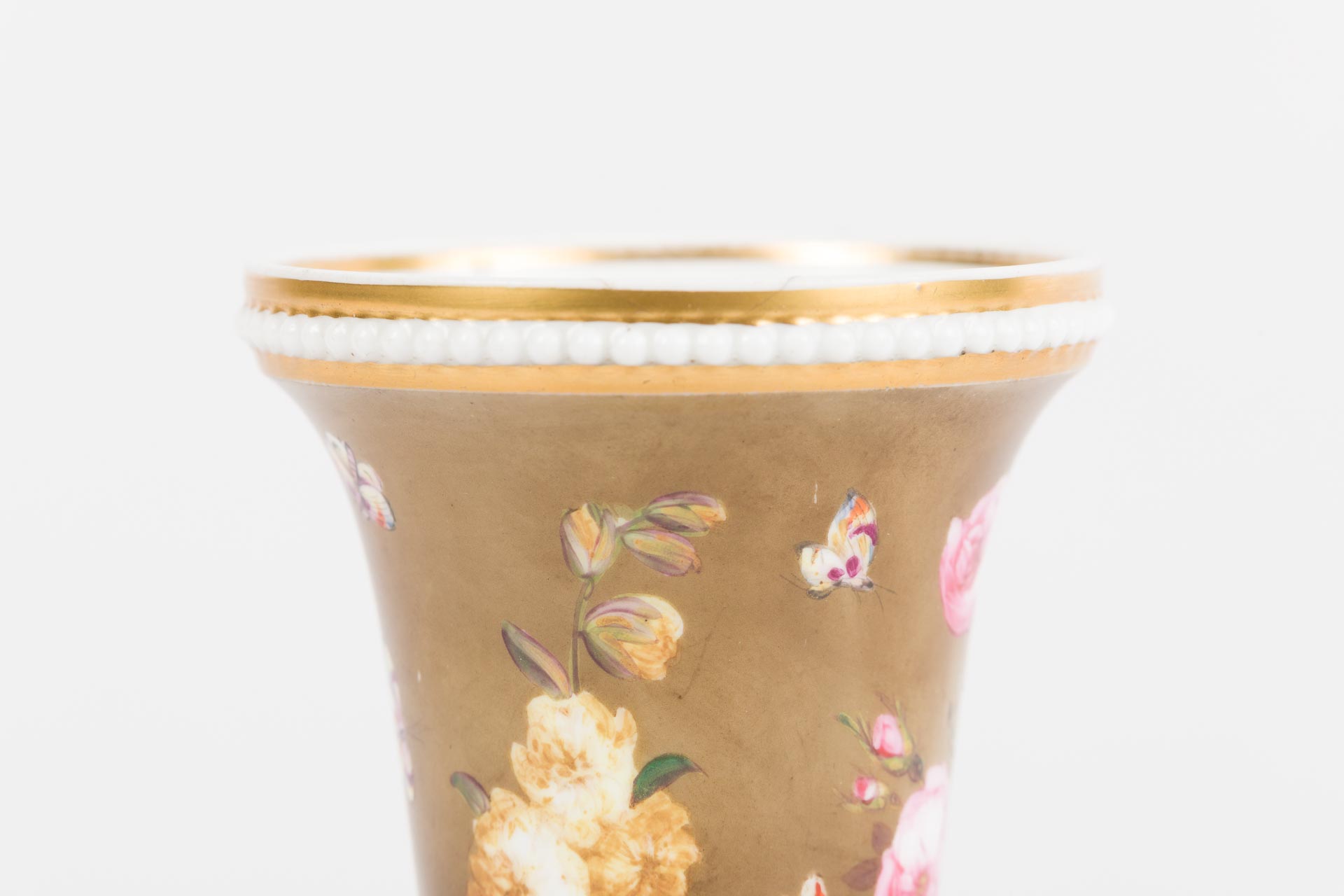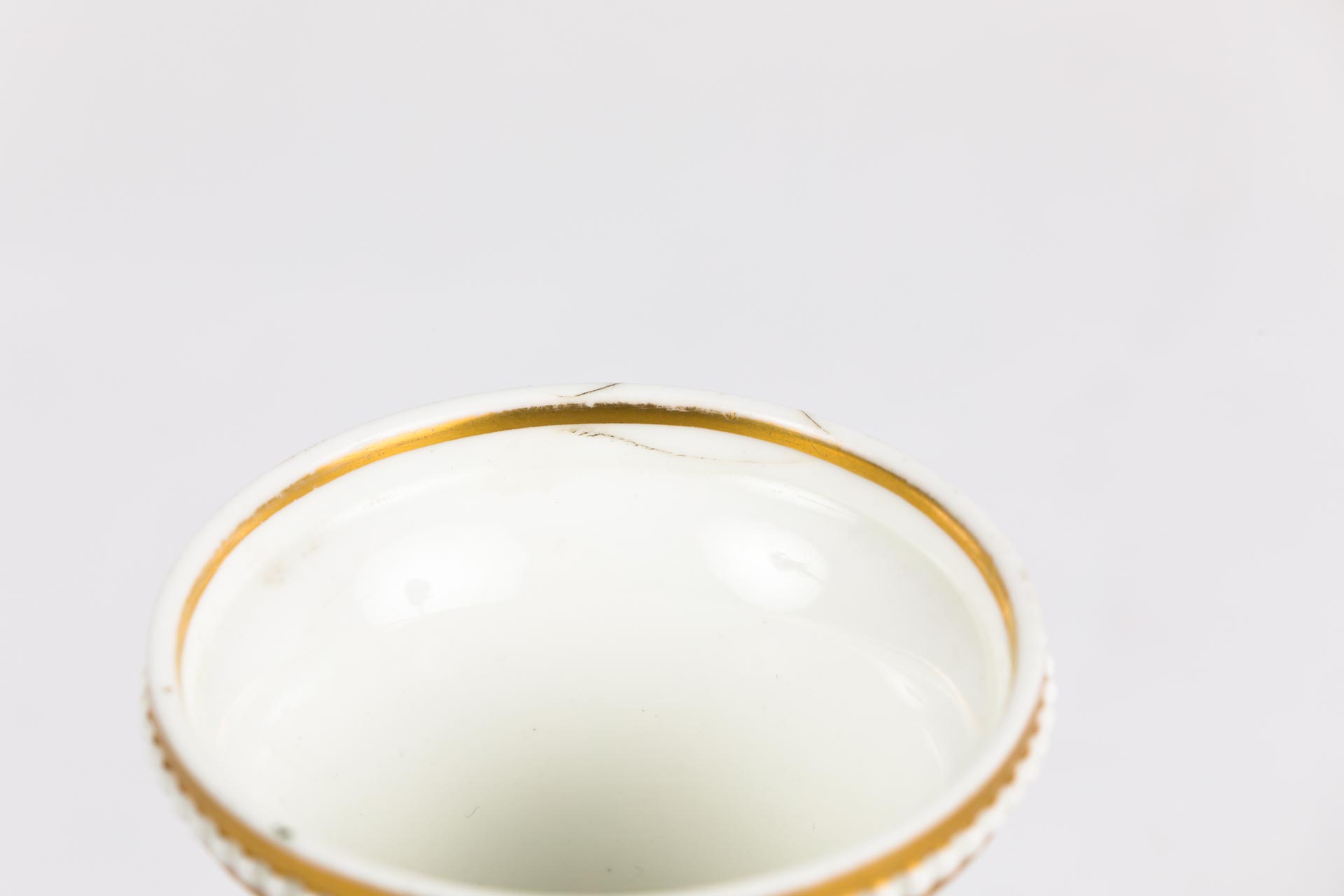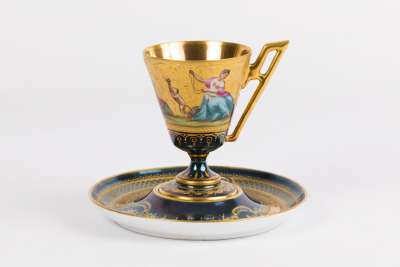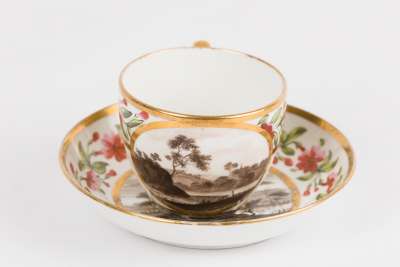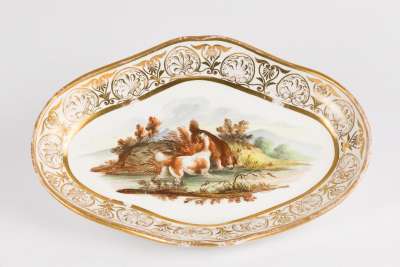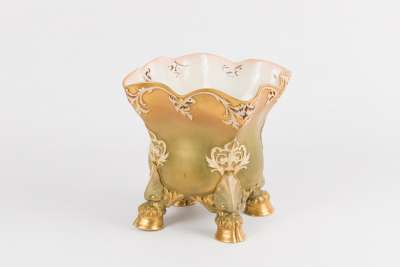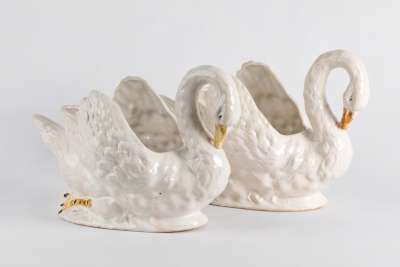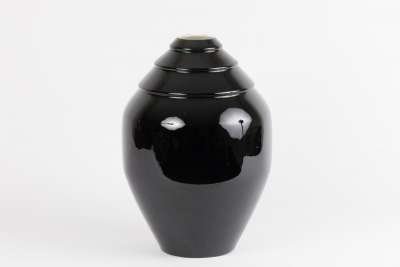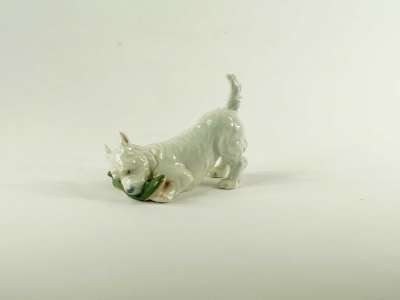An exquisite example of early 19th-century English porcelain, this Spode spill vase dates from approximately 1810-1815. The vase showcases Spode's distinctive craftsmanship with its flaring form, adorned with applied pearl borders and gilded bands. The exterior is continuously decorated with an array of vibrant flowers and butterflies, set against an uncommon light brown background. The base of the vase bears the purple mark of Spode, confirming its authenticity and origin. This piece hails from England, a country renowned for its fine porcelain production during this period.
Condition Report
The Spode spill vase is in generally good condition, retaining its original decorative appeal. However, as noted in the curator's description, there is a small crack on the upper lip of the vase, which is visible in the provided images. This minor flaw does not detract from the overall historical and visual significance of the piece. The gilded bands and pearl borders remain intact, and the vivid floral and butterfly motifs continue to exhibit their original charm. Collectors seeking authenticity and historical integrity will find this vase a worthy addition, despite the noted imperfection.
Dimensions
Weight: 215gm, Length: 7.5cm, Width: 7.5cm, Height: 11cm.
A Decorative Accent for the Home
Originally, spill vases like this one were used to hold spills, which are slender sticks of wood or twisted strips of paper used to transfer a flame from a hearth or fireplace to light candles, pipes, or stoves. In the early 19th century, such vases were a common sight in British households, placed on mantels or side tables. Today, they serve as decorative accents, adding a touch of historical elegance to modern interiors.
Regency Style and Design
The Spode spill vase exemplifies the Regency style, characterized by its elegance and classical influences. This period in design history is renowned for its refined aesthetics, often incorporating elaborate floral motifs and intricate detailing. The use of a light brown background in this vase is atypical, offering a unique variation within the Spode repertoire. Such design elements reflect the Regency era's penchant for sophistication and ornamental beauty, making this vase a fine representation of the style.
The Craft of Porcelain Production
Spode's porcelain production during the early 19th century was marked by innovative techniques and high-quality materials. This spill vase was crafted using fine bone china, a material perfected by Spode, combining durability with a delicate appearance. The applied pearl borders and gilded bands demonstrate the meticulous handwork characteristic of the period. Each element, from the floral motifs to the gilding, would have been applied by skilled artisans, highlighting the craftsmanship involved in creating such decorative pieces.
Created by the Esteemed Spode Manufactory
Founded by Josiah Spode in 1770, the Spode manufactory quickly became a leader in English porcelain. Known for pioneering the development of bone china, Spode set the standard for quality and design. By the early 1800s, the company was producing some of the finest porcelain in England, characterized by innovative designs and superior craftsmanship. This spill vase, marked with the purple Spode signature, is a testament to the legacy of one of the most influential names in ceramic history.
Sought After by Connoisseurs of English Porcelain
Collectors of English porcelain prize Spode pieces for their historical significance and craftsmanship. The appeal of this spill vase lies in its authentic Regency design and the reputation of its maker. Pieces like this are often sought after for their decorative versatility and the glimpse they offer into early 19th-century domestic life. As part of the Timothy Menzel Collection, this vase holds additional provenance, adding to its desirability among collectors. Its unique colour palette and intricate detailing make it a standout piece for enthusiasts of Spode and early English ceramics.

